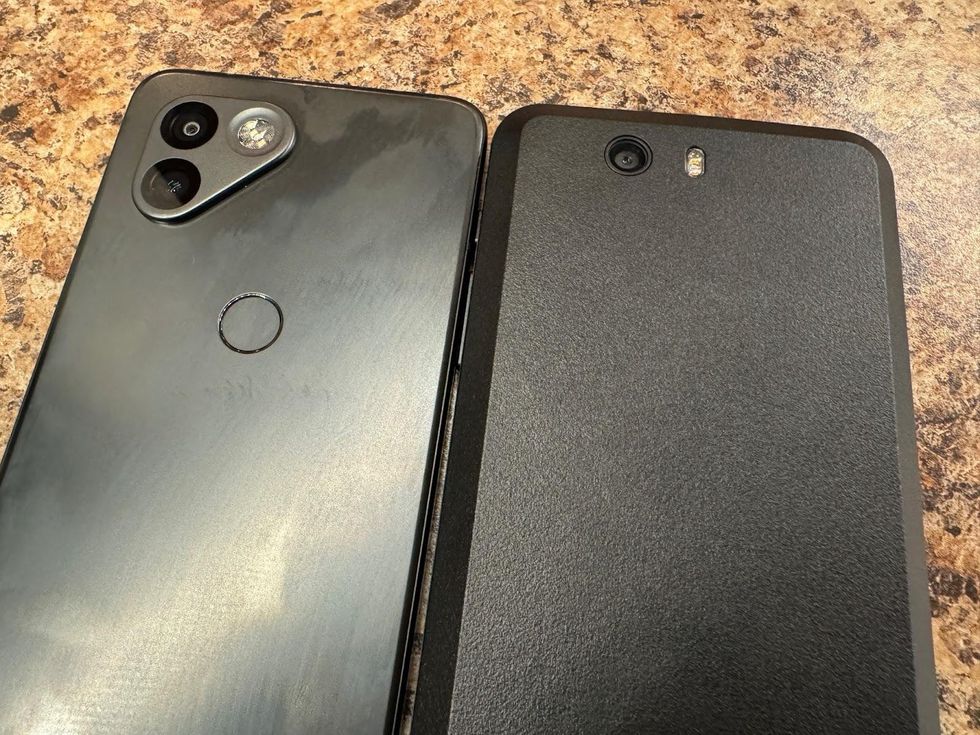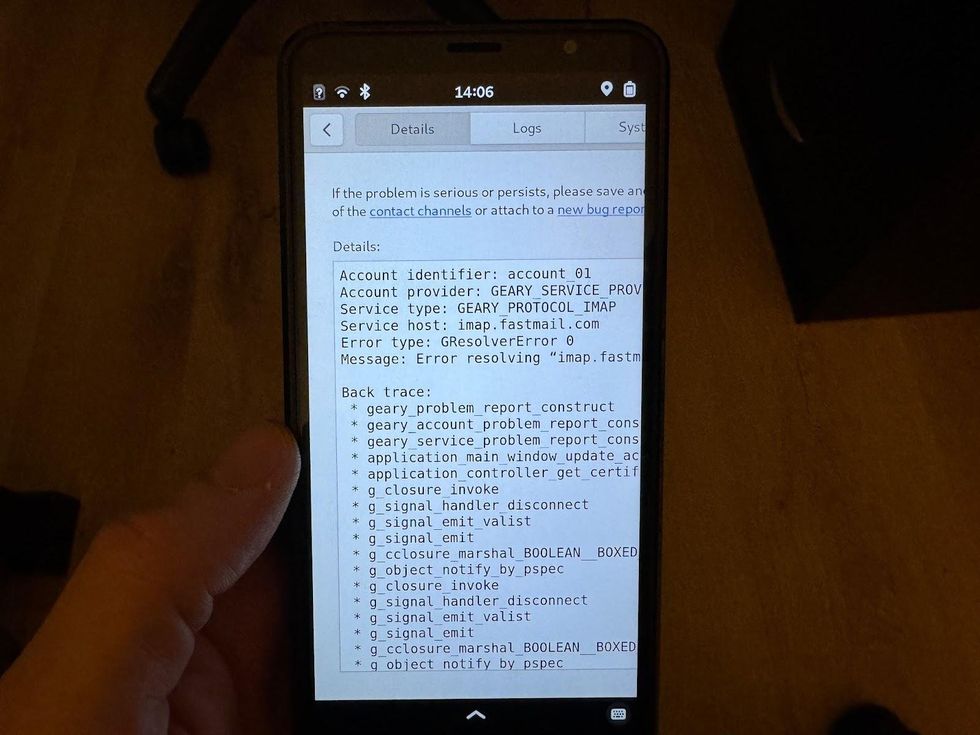
Image courtesy of Purism

They say you can’t build a smartphone in the United States.
They say an American smartphone would be insanely expensive.
They say there isn’t enough manufacturing talent to build a smartphone in America.
Sadly, they may be right.
Smartphones are a fantastic invention but a nightmare for privacy and security. They almost all come from China. They run proprietary and extremely locked-down software. They are nigh-impossible to service, even for even technically minded users. Even simple things we used to take for granted, like replacing our batteries, are frowned upon.
For years, the liberty-minded in the tech scene have dreamed of a smartphone made in the United States. A smartphone that lets you replace your battery. Ideally, it would run open-source software without being controlled by the tech giants.
Here it is, the Purism Liberty Phone — an All-American (nearly) variant of its Librem 5 phone. The Liberty Phone is everything you may have always thought you wanted in a phone. As the company proudly states, “All the electronics of the Liberty Phone is made in our USA facility, and the entire phone is assembled in the USA.”
Which is what makes this review so difficult. It’s everything I’ve ever wanted in a phone, but sadly it falls short – and at $1,999.00, double the price of the Librem 5.
I feel legitimately awful about what I will say about this phone, so let me start by saying what’s great about it.
For one, it has a headphone jack, a rare quality in smartphones these days. You can replace the battery rather easily by popping off the back cover. Underneath the cover, you’ll be pleased to see standard Phillips-head screws, as opposed to the hodgepodge of tamper-resistant screws and glue you see in most modern smartphones.
The Liberty has a unique privacy feature: along the left are three small kill switches for cellular, wi-fi, and the camera and microphone. However, their placement is a bit too prominent, and they’re easy to engage accidentally.
And did I mention that this phone was produced in America, with a minimal number of overseas parts? That in itself is an impressive feat.
Now, let’s get to the rest. Pulling the Liberty Phone from the box was a shock. First of all, this is the thickest smartphone I’ve ever held. And the back of the phone is plastic — rather cheap-feeling plastic at that. In many ways, handling this phone is a trip back to 2010.
Another flashback to 2010 is a total lack of fingerprint or facial recognition. Your only option for unlocking the phone is to manually enter a passcode.
Looking at the back of the phone, there is only one camera sensor, and a small one at that. Whether you take photos with the 13 MP rear sensor or the 8 MP front sensor, images will be grainy, banded, and washed out. I haven’t seen photo quality this poor since the days of the Motorola RAZR.

The screen is a plus … if you’ve missed seeing pixels. To be fair, you can just barely make them out.
I’d love to show you some screenshots of the Liberty’s software, but I can’t. See, if the Purism Liberty ran a variant of Google’s Android mobile OS, I could press a combination of buttons to take a screenshot. However, the Liberty does not run Android but rather Purism’s own flavor of Linux, which apparently doesn’t have a screenshot shortcut.
I asked Purism how to take a screenshot. They suggested I search for “screenshot” in the PureOS Store. I did. Nothing appeared. Someone on the forum suggested installing the “librem5-goodies” package. I searched for it but didn’t find it. Oh well. Onward.
Since the Purism Liberty doesn’t run Android, don’t expect your usual set of apps like Facebook, Spotify, YouTube, and X. However, this … may not be such a bad thing. Instead, the PureOS Store offers a set of apps that will feel familiar to many desktop Linux users, like the email app Geary and the music player Lollypop (which is quite good on the desktop). For most of the rest of the apps I mentioned, the Firefox web browser is baked in.
Even if you can get on board with having a non-standard set of phone apps, you’re going to have to adapt to an operating system that hasn’t quite adapted to the phone.
Take sharing, for instance. On Android and iOS, pretty much every app has an icon you can tap to share a link or image with another person or app. PureOS does not have this. Just figuring out how to access the photos I had taken took some work. Settings > Sharing offers options to enable file sharing over the ancient WebDAV protocol, but I could never figure out how to access the phone from another computer. There is also a media sharing option that isn’t explained.
Even if I couldn’t take a screenshot, I at least wanted to figure out how to send one of the photos I had taken on the device to something else. I tried setting up my Fastmail email account with Geary, the built-in email client. Unfortunately, that only led to errors, even after triple-checking the settings and password. I tried connecting the Liberty phone directly to a MacBook Pro, but it didn’t appear as a storage device that I could extract files from.

I was about to attempt another method when the battery spontaneously died. There just comes a certain point where the juice isn’t worth the squeeze.
I’ve been using Linux on and off since 1996 — starting with Slackware — and I simply cannot figure out this phone. It doesn’t help that the Liberty phone is so bloody slow. Loading web pages or browsing the PureOS Store is excruciating. Even on fast wi-fi, it feels like I’m on dial-up or, at best, a negligible cellular connection. And the phone runs uncomfortably hot on top of that.
Unfortunately, even the built-in apps may not work correctly. When I first opened the Maps app, it was pinpointed by location on the western coast of Africa. It eventually tracked me down to the correct country, state, and even county but still presents my location many miles from where it actually is. Likewise, the Weather app thinks I’m 30 miles from where I am. You could not navigate with this thing.
I wanted to like this phone. I wanted to love it. I wanted it to be just good enough that I’d throw my iPhone into the creek and say goodbye to Apple’s tyrannical ways forever. That said, I’m sticking with my iPhone 15 Pro.
I could deal with some non-standard apps, a clunky interface, or some other peccadillos. However, the Liberty Phone doesn’t merely have a few flaws. It’s completely unusable.
It also pains me to say this because I know the team at Purism has performed a Herculean task building this thing. They’ve designed not just a phone but also an entire operating system and supply chain. The fact that they’ve worked so hard to build something utterly unusable is tragic. Commendable perhaps, but tragic.
I want to leave this review on a somewhat positive note. What the Purism team attempted here is simply Herculian, swimming upstream from 40 years of globalist American foreign policy and corporate offshoring. This product is a failure, but it’s not for lack of effort.
The simple truth is that no single company alone — perhaps not even a giant like Apple — can reverse this trend. If we are to rebuild America’s manufacturing base, it’s going to have to be a concerted and government-driven effort.
And it’s something that must be done. Right now, the vast majority of semiconductors come from the little island of Taiwan — 60% of all semiconductors and over 90% of the advanced ones. Those chips power almost every new device you buy, whether it’s a computer, a car, or a toaster oven. Those chips are critical infrastructure.
Unfortunately for the world and the Taiwanese people, that little island is highly desired by China. China is slowly stealing the island. One day, the Chinese will figure out some way to take it.
We must diversify our electronic supply chain. I applaud Purism for its efforts, but the company can’t be expected to do this alone.
Josh Centers